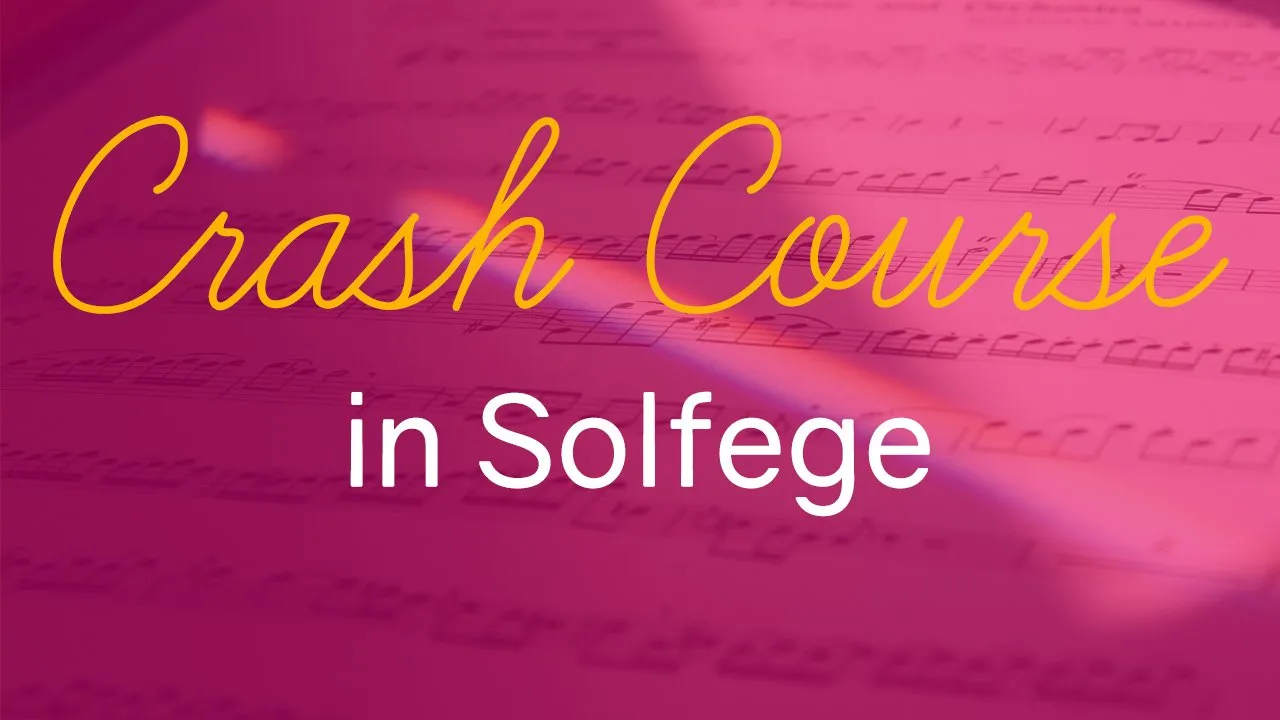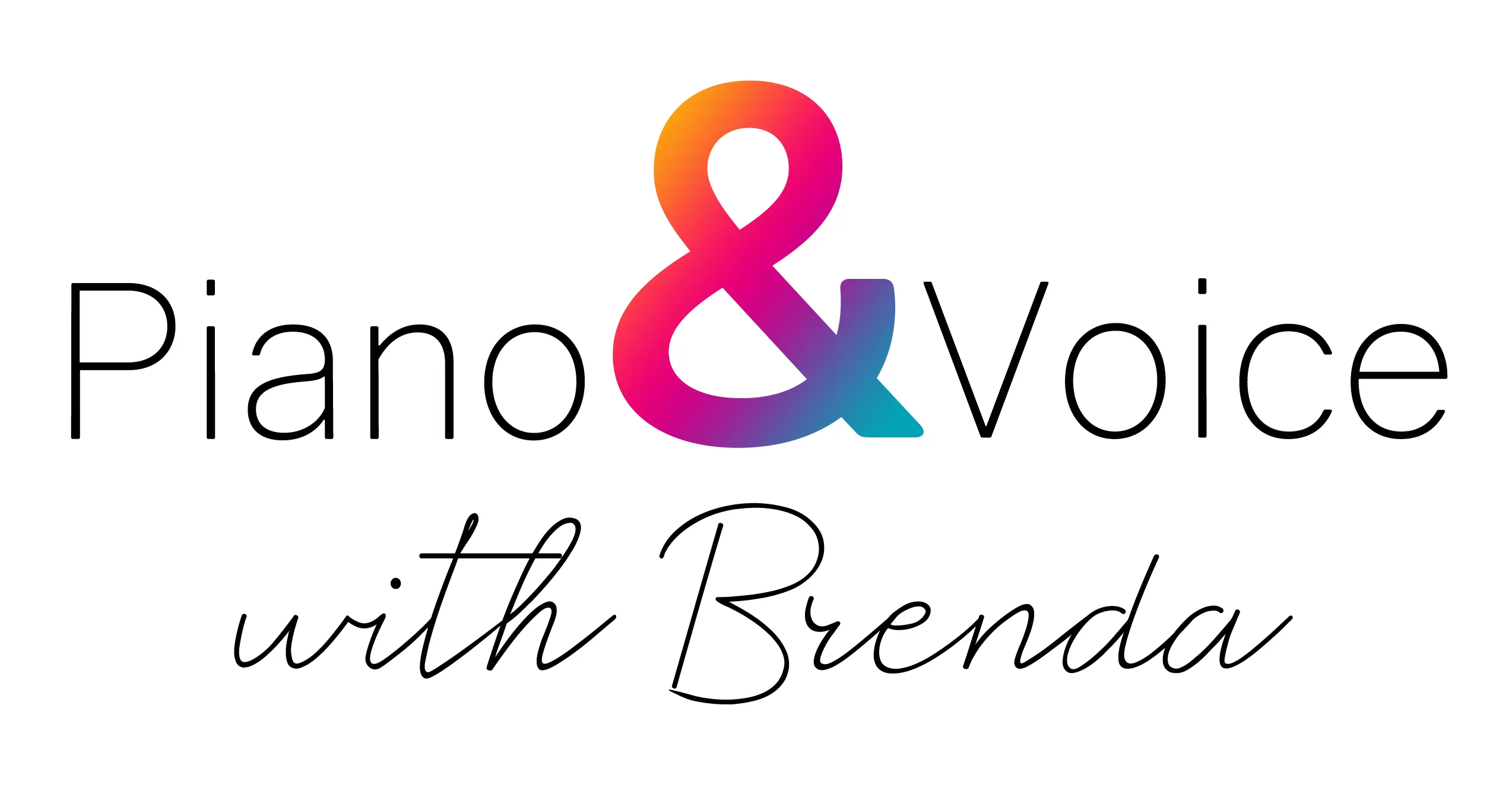
In today’s video I’m going to show you how to learn to play by ear. I have been using this method for over 20 years and it has been a total game changer.
You may have watched my recent video which I will link up here called You Can Learn To Play By Ear and I got such a huge response from that I wanted to follow it up with how to use solfege to help you along with this. In this video I show you how to learn to play by ear using Solfege. Let’s start with a quick story time.
My cruise ship days
When I was in my early 20s, I managed to land a really great gig on cruise ships doing a sing-along piano bar. The thing about sing-along piano bars is that you need to learn a lot of songs… like hundreds and hundreds and hundreds of songs. I didn't know that many songs and I discovered once I got on the gig that I was going to be in deep deep trouble and probably get fired if I didn't learn a whole bunch of songs.
My problem was I couldn't actually get to a piano during the day because all the pianos were in the lounges and the lounges were full of all the passengers and guests. This was also before the internet was a big thing - I went in the year 2000 so they didn't have a million sites where you could download lyrics and chord charts. None of that was available to me - all that I had was CDs to listen to, a notebook and my trusty master key pitch pipe.
I had a tiny cabin with no piano in it and no chair. Just a bed. I would sit in bed and I would write out all the lyrics by hand then I would get my master key pitch pipe to find what key I was in and I would listen to the bass notes of the song and hum them. Then, I’d figure them out in solfege.
I Learned a LOT of Songs This Way
In my 11-week contract, I learned about 600 songs and I had notebooks and notebooks and notebooks FILLED with lyrics. Not only did I save the job and go on to get a whole bunch of other gigs like that for several years, but it also made my ear training and my hearing capacities go through the absolute roof.
So yes. I understand that you can go to websites and you can download all of this kind of stuff but I do think that this is something worth pursuing. After transcribing all of these songs, I had these big, open ears and not only can I learn and retain songs very quickly now, but I can actually join in a song midway. If I'm on a gig and I don't know the song, I can hear it and pick it up very quickly so this really helped my ear training in a big way.
Using Solfege to Play by Ear
Using solfege is really helpful. All you have to do is understand the layout of the major and minor scale in solfege and you're good to go! If you want to learn more about solfege you can check this video that I made recently that takes you through the major scale so you can get your feel for it.
How Play By Ear Using Solfege
Step 1: Pick a familiar song
- In this case I'm going to take the song Twinkle Twinkle Little Star because I think it's one we all know. I’m going to get my trusty master key. Let's do it in the key of C.
Step 2: Play the C and then sing Twinkle Twinkle for a second
Step 3: Figure that out in solfege
- You'll notice that walking your way up through the scale a little bit helps you find where you are. Not only are you really getting a very full understanding of what the pitches are and what they mean, it also means that you can transpose it into any key. If I want to sit and play this on the piano I could figure it out and then play it thinking of the solfege because it's movable ‘do’ solfege. Whatever the ‘do’ is, is the 1 of the whatever key we're in. This is why movable ‘do’ is so terrific - you can transpose very easily & all of the solfege is going to be the same in any key. You are well on your way to learn to play by ear!
Step 4: Find the shape of the bass
- In order to figure out the chords of a song, I take a second to go through and really listen to the baseline of the song to get a shape for what the harmony is. You’ll start to hear what's going on in the bass but the tricky thing about listening to bass lines is to not get too caught up in all of the moving notes. Generally speaking, bass players are playing the root so the ‘do’ of whatever the chord is on the first beat of the bar. That's your best bet to start to tune into
Are you a singer who needs to learn piano but doesn’t know where to start?
Sign up for my Piano Skills for Singers guide to get a list of the exact skills you need to learn!
This is a way of really working on your ears and building your ear training in a way that has more substantial meaning. This is a way that you can make music theory and ear training and musicianship be something that's tactile and something that is really vocational and really useful for you. Think of what it would be like to be able to listen to a song and then be able to sit and play it? By working on this, you will be able to do that and I have many students over the years who have said “oh I can't find the sheet music to this song, I really want to learn this song” and then I listen to it and I jot the chords out real quick and they go “okay hold up how can you do that??”
All you need to know is what key the song is in and then you can play it. Think of the applications as far as being a singer or being able to hear harmonies - being an instrumentalist who has to come up with background parts. Maybe you're in a band and you want to be able to pick up background parts, maybe you want to be better in tune with the songs you're writing or the compositions you're creating.
Assignment to practice learning to play by ear
My assignment for you is to pick a couple of very easy songs; folk songs, happy birthday, christmas carols, anything along the lines of something that may be familiar to you. Whatever it may be, practice trying to figure out what it is in solfege.
I promise you that playing by ear is super addictive. I spent a whole summer riding my bike around Toronto singing all the jazz standards I knew in solfege. Nerd alert.
I’m telling you this is game changing stuff. if you're interested in digging a little deeper into solfege and the applications of that or just build your musicianship in general, you can check out my most recent online course it's called Crash Course in Solfege: The Bundle and it covers everything you would need to know in solfege in major and all three minors (natural minor, harmonic minor and melodic minor). It takes you through the chromatic scale and takes a deep dive into how to apply all of this. There's a ton of bonus material too, including two voice lessons built into the course!
This technique really expanded my music theory knowledge & the way I hear music. I hope it helps you as much as it helped me!
 Want to learn Solfege and build your ears and musicianship skills?
Want to learn Solfege and build your ears and musicianship skills?
The Versatile Musician is an all-in-one membership that combines video lessons, print material and live support to help you level up your skills and thrive as a musician and music teacher.
To learn more, check out www.theversatilemusician.com and get ready to level up your musical skills!

Do you struggle to SING IN TUNE?
Do you need to build your MUSICIANSHIP SKILLS?
Are you looking to deepen your understanding of MUSIC THEORY?
Are you looking for new material to help your STUDENTS GROW?
Crash Course in Solfege is an all-in-one course for developing your ear training, aural skills and music theory.
Solfege (do, re, mi, etc) is a centuries-old method of ear training that I have adapted for 21st Century singers.

 Introduction to Solfege
Introduction to Solfege